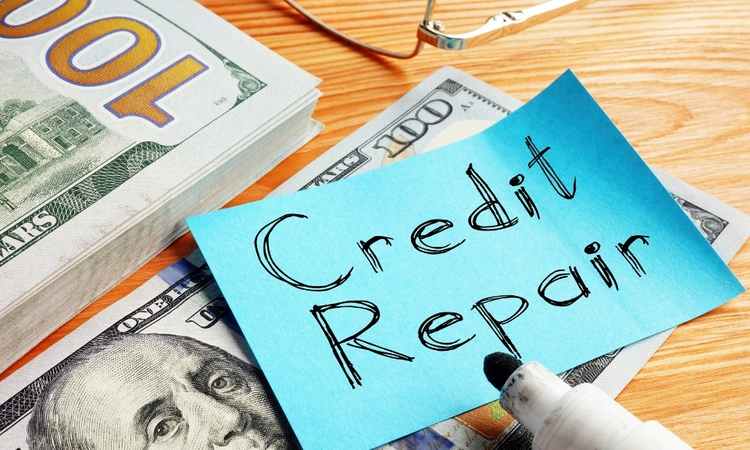The Basics of Credit Repair
When you’re looking to improve your credit, it’s important to know what goes into credit repair. There are certain steps and procedures you can take to make the process smoother and faster. By understanding the basics of credit repair, you can get on the right track for improving your credit score. Here are some of the key elements of credit repair:
First, make sure that you have a good understanding of your credit report and score. This will help you identify any areas that need work. Next, start by addressing any negative items on your report. Dispute inaccurate information and try to negotiate with creditors to get them removed from your report. You can also try to increase your overall credit limit by requesting a higher line of credit from lenders. Finally, continue to pay your bills on time and maintain a good payment history. These are all important factors in improving your credit score.

1. Get your credit report
The first step to improving your credit is to understand what is being reported about you. You are entitled to one free credit report per year from each of the three major credit bureaus-Experian, Equifax, and TransUnion. Ordering your report is easy and only takes a few minutes. You can do it online at AnnualCreditReport.com or by calling 1-877-322-8228. Once you have your report, take some time to review it carefully. Look for any errors or outdated information that could be dragging down your score. If you spot anything, dispute it with the credit bureau. This process can take a little time, but it is worth it if it results in an accurate and up-to-date report.
2. Dispute any inaccurate information on your credit report
Credit reporting agencies are required to investigate any disputed items on your credit report. Simply call the customer service number for the credit reporting agency and explain what information you believe to be inaccurate. Be sure to have supporting documentation, such as bill statements or account records, available when you call. The credit reporting agency will then contact the creditor and request verification of the accuracy of the information.
If the creditor is unable to verify the accuracy of the information, it must be removed from your credit report. In some cases, you may also need to send a written dispute letter to the credit reporting agency.
Be sure to include your full name, address, and social security number, as well as a copy of your driver’s license or other form of identification. You should also list each item that you are disputing and explain why you believe it is inaccurate. Once the credit reporting agency receives your letter, they are required to investigate each item on your list and report back to you within 30 days.
3. Pay off any outstanding debts
Before beginning to invest, it is important to take care of any outstanding debts. This will reduce the amount of money that you have to pay in interest each month and free up more money to put towards investments. To find out what you owe, check your credit report for accuracy and then calculate your debt-to-income ratio.
Once you know what you owe, you can create a budget and begin paying off your debt using the avalanche or debt snowball method. The avalanche method focuses on paying off debts with the highest interest rates first, while the snowball method focuses on paying off smaller debts first. Whichever method you choose, getting rid of debt should be a priority before beginning to invest.
4. Keep track of your credit score and credit utilization ratio
Keeping track of your credit score and credit utilization ratio is important for maintaining a healthy credit profile. Your credit score is a number that lenders use to assess your creditworthiness, and it can range from 300 to 850. The higher your score, the more likely you are to qualify for loans and lines of credit with favorable terms. Your credit utilization ratio, on the other hand, is the percentage of your available credit that you’re using.
For example, if you have a $1000 line of credit and you’re using $500 of it, your credit utilization ratio is 50%. It’s generally best to keep your ratio below 30%, as this shows lenders that you’re a responsible borrower who doesn’t max out your lines of credit. By keeping tabs on both your credit score and your credit utilization ratio, you can make sure that you’re staying on top of your finances and maintaining a healthy credit profile.

5. Monitor your credit file for any new errors or signs of identity theft
Checking your credit file regularly is an important part of maintaining your financial health. By monitoring your credit file, you can catch errors quickly and resolve them before they do any damage to your credit score. You can also keep an eye out for signs of identity theft, such as new accounts or inquiries that you don’t recognize. If you spot something suspicious, you can take steps to protect your identity and resolve the issue. By staying on top of your credit file, you can help to ensure that your credit remains healthy.
6. Use a secured credit card to rebuild your credit history
A secured credit card is a type of credit card that requires you to put down a deposit, which serves as your credit limit. For example, if you have a $500 secured credit card, you would need to deposit $500 into an account with the credit card issuer. This deposit acts as collateral in case you default on your payments.
Secured cards are often used by people with bad or no credit history who are trying to rebuild their credit. Because secured cards require a deposit, they are less risky for lenders and generally have lower interest rates than unsecured cards. Additionally, using a secured card responsibly can help you improve your credit score over time, making it easier to qualify for better financial products in the future.
In order to rebuild your credit history, you need to understand the basic elements of credit repair. Get your credit report, dispute any inaccurate information, pay off any outstanding debts, and keep track of your progress. These six steps will help you slowly but surely improve your credit score and get back on the path to financial success.

Erika Finn, founder of Credit Help, is an attorney who graduated from law school (JD) at University of California, Berkeley and is a member of the California Bar Association. She was a member and editor of the California Law Review and won the Prosser Prize for Legal Accounting. She holds a Master’s Degree (MFA) from the University of Southern California (USC) and a Bachelor’s degree (BA) from Indiana University- Bloomington with highest distinction.
Credit Help believes that everyone should have access to helpful, free information about how to raise their credit rating.
Articles on Credit Help are not legal advice or financial advice.